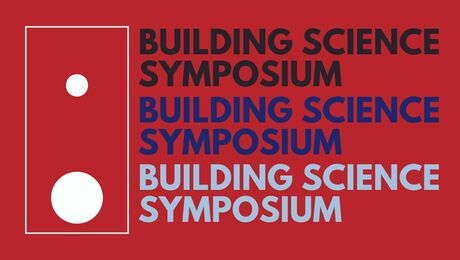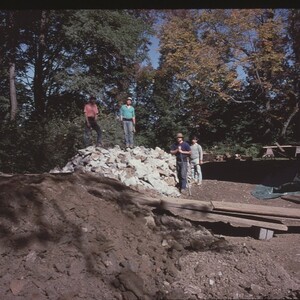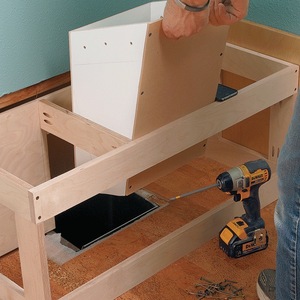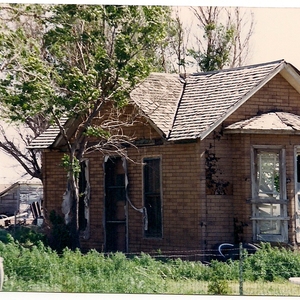I need to install a 20A breaker and gfci to a homeline pannel tomorrow to get some power I have all of the stuff my question is black-hot to the breaker, white -ground to ther ground bars right next to breakers but there is a smaller ground bar about 2 inches to the right of the right side ground bar and one to the left that is twice as long with a large lug for a #4ish ground. I should be ok to run the white and ground wires to the ground bar closest to the breakers right? What are the other 2 for? sorry I dont have picks
Discussion Forum
Discussion Forum
Up Next
Video Shorts
Featured Story

Fine Homebuilding is excited to be the official media partner of the 2024 Building Science Symposium series! This event offers builders, tradesmen, architects, designers and suppliers to discuss topics ranging…
Featured Video
SawStop's Portable Tablesaw is Bigger and Better Than BeforeHighlights
"I have learned so much thanks to the searchable articles on the FHB website. I can confidently say that I expect to be a life-long subscriber." - M.K.

















Replies
I should have included that the panel is a 200A 30 space squareD homeline pannel
Thanks!
I have not worked on one of those panels, so this is generic.
If this is a main service entrance then you have a neutral bus bar. And you have a the grounding electrode conductor (the wire that most often gooes to the ground rod and water pipe) that is bondded to the metal case, most typically via a ground bus bar. There might be one or more other ground buses that are also bonded to the case by the mounting screws.
Then then neutral bus is bonded to the ground bus. It can be done by one of several methods. Common ones are a screw that goes from the neutral bus into the case. Other method use a strap that goes between the neutral and ground bus.
The main service entrance is the first disconnect after the meter and is the location where the neutral and ground are bonded together.
If that is what you have then the neutral and ground buses can be used interchangable for eithe grounds or neutrals.
Notice - a bus hole used for a ground Might be able to hold more than one wire, see the label on the panel.
However, a hole used for a neutral connection can not have anyother wires in it. That NEC and new wording. In the past it was not uncommon for a neutral and ground to share one terminal.
If this is not a service entrance then the neutral bus is kept separate from the ground bus and only neutrals should be on the neutral bus and grounds on the ground bus. In that case the panel is a sub-panel and will be feed by 4 wires.
This is the main pannel right from the meter bace - not a sub pannel. so grounds and neutrals can go in both either way it doesent matter?
" so grounds and neutrals can go in both either way it doesent matter?"Right.
The GFCI breaker needs to have both the hot and neutral attached to it. Then the neutral from the breaker needs to go to the neutral terminal bar. If the neutral current doesn't pass thru the GFCI, it'll trip instantly any time there's any load at all on it. It should be explained in the instructions that come with it. Are these used breakers, so you don't have the instructions?
Personally, I prefer to use GFCI receptacles. They false trip a lot, and it's easier to push a button in the same room with you rather than have to walk back to the panel.
This being the service entrance, neutral and ground could go on any of the bars. But just for the sake of neatness, I'd try to keep them organized.
-- J.S.
A typical panel will have two bars- one running down either side- for the connection of the neutral (white) wires. Often, you will ess where these two bars are connected to each other. There is also a large lug on one of the bars, for connecting a large wire. These bars will have a layer of black plastic under them.
There will be another, separate, bar either to one side, or at the end of the panel. This bar is connected directly to the steel cabinet. This is for connecting the ground (green or bare) wires.
In a 'normal' circuit, the black wire attaches to the breaker, and the white wire connects to the neutral bar.
For an AFCI or GFCI breaker, this is not done. Rather, these breakes come with a coiled white wire attached to them.
The correct way to wire these is to connect this coiled wire to the neutral bar. From the circuit, the black wire will connect to the top screw, while the white wire will also connect to another (partly hidden) screw on the breaker.
Thanks guys for the help!
Post some pics to help if anyone happens to stumble on this thread in the future.
Sorry for beating a dead horse but I want to error on the safe side and eliminate any trouble with the inspector. form the pic on the previous post shows seprate ground bars with the lug for the large ground wire. These buses will be where I will put all bare grounds but do they need to be conected to the nutral bars (only white wires) right next to the brakers with a piece of 12 wire or a large # 6 or nothing? Sorry to ask I went on the square D site and it was not crystal clear and I cant find any pics on the net to make me satified. Thanks for the help and sorry for the trouble.
The grounds get connected to the neutral at only one point- and that being as close to the service (meter) as you can.
Out West, we usually use a type of panel that includes a main disconnect as well as a meter socket. That's where we join the neutrals to the round.
Back East, there is usually a separate main disconnect where this separation takes place. Look, the inspector works for you... don't be afraid to ask him!
Edited 8/6/2006 12:20 pm ET by renosteinke
"The gronds get connected to the neutral at only one point- and that being as close to the service (meter) as you can"No, the bonding is at the SERVICE entrance.Someplaces allow that to be the meter, but the panel within a less than a ft or two is still treated at the main panel with the neutral bonded."Out West, we usually use a type of panel that includes a main disconnect as well as a meter socket. That's where we join the neutrals to the round.
Back East, there is usually a separate main disconnect where this separation takes place"Well in the middle of the country it is most common for the panel to be inside and that is also the main disconnect.SE seem to be the place that has more variation from the basic NEC requirements from both the POCO and the local code officals.
I didn't want to get off on a tangent, defining what "service entrance" was. As close to the meter ... was my attempt to put it in plain english.
In michigan midwest so I need to connect ground bars with nutral bars?
"In michigan midwest so I need to connect ground bars with nutral bars?"Do you need to because you are in the midwest. ABSOLUTELY NOT!Should you, maybe!Those statements are just a generic common on the way that installations are COMMONLY done. But each installation is different.I am assuming that the orginal installation was done correctly. So don't try and change it.Looking at those pictures, if the neutral is not bonded in that panel then the outter set of bars is the ground bus and the inner set is the neutral.From those pictures I can't see what where the bonding screw/strap is. But that is beside the point.If the panel was correctly installed then you are alwasy safe using the outter bus bar for the ground and the inner one for the neutrals.